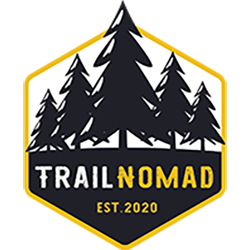Tips & tricks
Recovery basics
What are the basics you need when going offroad?
You cannot go offroad without ever getting stuck, the best tip? Take some friends who can pull you out. The risk of getting stuck for hours is always bigger when you’re alone and not fully equipped with a winch. Not sure how to pick a good winch for your 4×4? Read all about it in our blog post.
Your recovery gear should consits out of a few essential items and these items are good to have in your 4×4 all year round, but especially when hitting the trails.
Tow strap
A tow strap is often confused with a snatch strap. While a snatch strap is used to pull you out when you’re stuck, a tow strap is primarily used to pull a damaged or not running vehicle.
Tow straps are typically made of fabric with no elasticity. They are strong and secure ropes or straps that can pull heavy weight without the danger of re-bounding if the strap itself tears/breaks or the attachment points between the two vehicles fail.
Snatch strap
A snatch strap is made to snatch a car that is stuck. A snatch strap uses kinetic energy that has the ability to stretch to a significant degree and return to its original length. The elasticity combined with the momentum of the recovery vehicle creates a “snatching” effect that can extract a vehicle from the most precarious positions without compromising the integrity of the vehicle and its recovery points.
You have all kind of recovery ropes, to pick the right one you have to know the gross vehicle weight of your car. Now you know that, multiply it by at least two or three times, that’s the minimum breaking strength you want for your snatch strap.
Note: Due to the nature of synthetic fibers, recovery straps require rest periods between use to return to their original length and capacity. Be aware that excessive pulls on a recovery strap over a short period of time can cause buildup of heat and possible failure.
Shackles
Shackles, also known as D-Rings are heavy duty contact points. You should always use a D-Ring to unify both ends of a tree strap, when properly engaging another vehicles recovery point or when hooking a winch. The winch’s hook should snap onto the D-Ring and never directly to the anchoring point.
Your shackles should have a rating of at least 3.25 tons, otherwise they’ll not be suitable for attaching one of the straps to them.
Tip: Tighten the pin until it seats, then back off the pin approximately ½ to a full turn. Always try to remember this or you’ll have a hard time getting the pin loose again.
Recovery damper
A recovery damper is made to restrict the whipping action of a strap or winch cable in the event of a failure, therefore reducing the possibility of vehicle damage and personal injury. You should position the damper in the middle of the strap or winch line.
To install just simply pull apart the hook and loop tabs and fold the damper over the cable, then press the hook and loop firmly back in place.
Winch
If you already have a winch you’ll also need some extra recovery gear. Don’t have a winch yet and not sure how to pick one? Feel free to contact us for advice or read all about it in our blog post.
Tree trunk protector
A tree trunk protector is made to protect a tree from your shackles. It can be used to connect a winch to a tree as anchor point. Always make sure the tree is well-rooted and wrap it around the tree’s base. If you place the tree trunk protector too high it might cause the tree to uproot which can cause serious injury or vehicle damage.
Winch extension strap
The winch extension strap is used to extend the reach of a winch line. It simply connects to the anchor point at one end and to the winch cable at the other.
If you’re using a snatch block, make sure the winch extension strap doesn’t interfere, any twists should be removed before the strap is subject to load.
Snatch block
A snatch block can not only be used for doubling the pulling capacity of your winch, but it can also be used to alter the direction of a pull if straight ahead isn’t an option.
To attach the snatch block to the cable, slide the plates so that they are 90 degrees apart. Place the cable around the pulley and realign the plates. The pulley is then attached to the anchor point via a shackle through the same side plate holes.
Note: Do not use a snatch block with a synthetic rope if a steel cable has been used with it prior. This can cause excessive wear or failure to the synthetic line.
Some last tips
- Clean your strap in warm water with a mild detergent and allow to dry thoroughly before storage.
- Always wear gloves during a recovery procedure, especially when handling cable.
- Always bring some basic tools so you can do minor to mid-level repairs on the trail. A ratchet set, wrenches, pliers and even zip ties are always a good idea.
- Take a headlamp or flashlight with you whenever you plan a long day out on the trails.
Kits
The best way to make sure you have all the basic gear to get you back on the trail is one of our recovery gear kits.
Not sure how to use all that recovery gear? Be sure to read our blog post.


Pingback: How to use your recovery gear - Trail Nomad